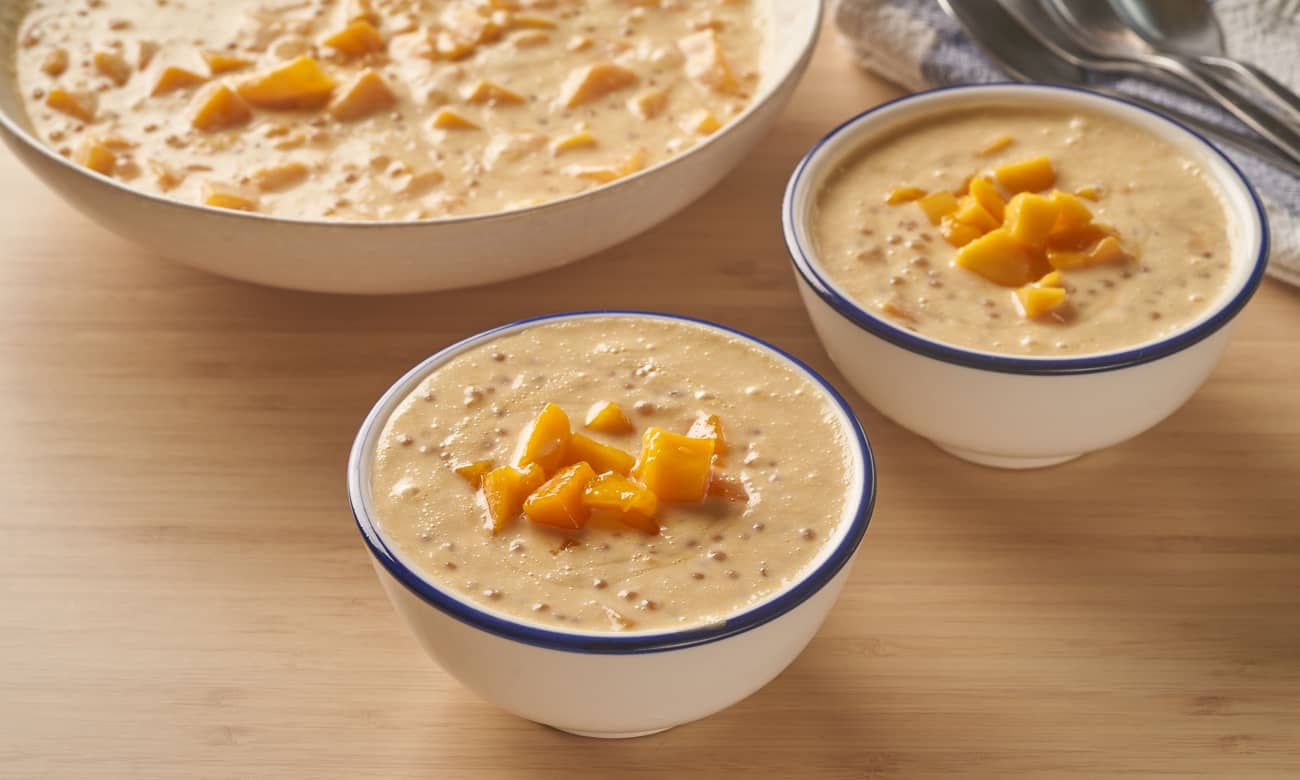
Here's how to make Filipino mango float or mango graham, a no-bake refrigerator cake of graham crackers, sweet cream, and ripe mangoes.
Mango float, the Filipino icebox cake also known as mango royale or mango graham, comes together through layers of graham crackers, sweetened cream, and sliced ripe mangoes. Make it once—and anyone can do it—and you’ve pretty much mastered the classic dessert. But this recipe shares a few tips to make your mango float even better.
What makes mango float so popular is its simple list of ingredients. You only need four things!




To make a creamier mango float, transform the sweetened cream into no-churn ice cream. You can do this by whipping the cream into stiff peaks before adding the condensed milk.
By whipping the cream first, you incorporate air into the mixture just like a churning ice cream machine. This creates softer, airier, ice cream-like layers of cream that stay scoopable even when frozen. No more rock-solid mango float!


Ever had mango float that’s soft and creamy all the way, right until you hit a dry layer of graham? This happens when there’s not enough cream for the graham to soak in, usually at the bottom-most layer where the crackers are pressed against the pan.
To prevent that dry bottom layer, begin your mango float with a cracker-thin layer of cream—not graham. Then add the graham layer over the cream, gently pressing down on the crackers to submerge them.


Pile on the rest of the layers however you like—the only rule is to save the top layer for fruit.
Want a cakier base? Alternate graham and cream layers, then leave all the mangoes at the top.
Otherwise, a center layer of fruit makes for a prettier cross-section. To make it, add half of the mangoes after the first graham layer. Top the fruit with cream, followed by a double layer of graham to make a sturdy base for the top mango layer.
Make sweetened cream: Using a hand or stand mixer fitted with the whisk attachment, whip the cream into stiff peaks, about 7–8 minutes. Switch to a rubber spatula or soft wire whisk. Pour condensed milk over the whipped cream, then gently fold until well incorporated no streaks remain.
Make first layer: Add ¼ of the cream into a 9x13-inch container—you want just enough cream for the first layer of graham crackers to soak in. Spread the cream with a rubber or offset spatula into a single layer as evenly as possible. Arrange graham crackers in a single layer over the cream.
Add more layers: Form the rest of the layers however you like, as long as you end with a top layer of cream.
Finish: Arrange sliced mangoes on top of the cream until fully covered. The slices will sink into the cream a bit, but this is okay. Cover the mango float with plastic wrap, making sure to press it gently over the mangoes, and freeze overnight. Slice and serve cold the next day.
This recipe fits into a 9x13" pan, about 3–4 inches deep.
Sure! You can divide this 9x13" recipe into two 8x8" pans, or halve the recipe for one 8x8" pan.
A simple mixture of cream and condensed milk would freeze into a block of ice. At the molecular level, the liquid in the mixture turns into large ice crystals, creating a dense, solid mass that makes the mango float too hard to slice.
But when you whip the cream first, you're adding lots of tiny air bubbles throughout the mixture. The air gets between the liquid molecules and prevents large ice crystals from forming. That block of ice becomes less dense, more brittle, and easier to break—creating softer, scoopable cream layers.
We recommend using whipped cream or heavy cream in this recipe. Both can hold air and be whipped to a stiff peak, achieving that ice cream-like texture we're going for.
All-purpose cream, the classic ingredient for mango float, is richer and heavier than whipped cream. It doesn't whip up and hold air too well, either. You can definitely use it, but you won't get the ice cream-like texture!
